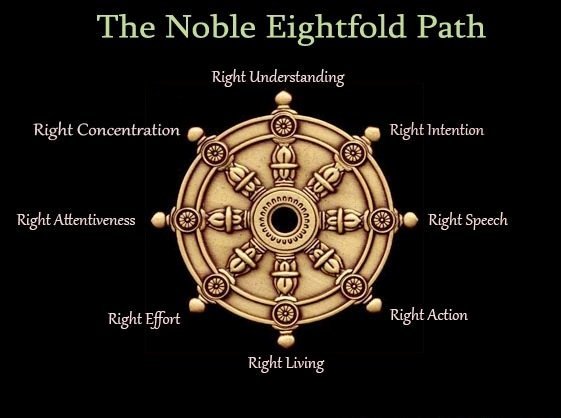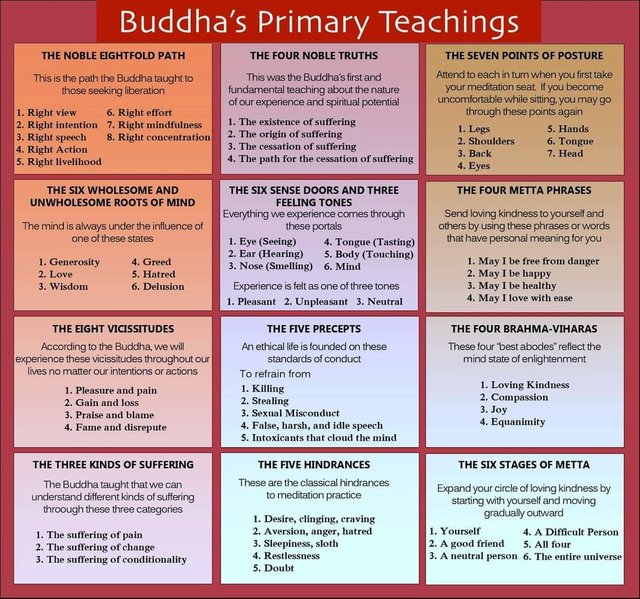

Dukkha means off centre, Sukkha means centered. In Pali language as reference to a wheel, either bad wheel or good one, the Samsara wheel of life, death, and reincarnation, thus being at the axle center or spinning around it will effect quality of the ride.
The metaphor used by Siddhartha Gautama in his first sutra. The word Dukkha is traditionally and inaccurately translated as pain or suffering, however it is the state of being off one's spiritual centre what is causing the subsequent pain and suffering.
The term used by the Buddha as part of a metaphor precisely because it was common knowledge that it is a dichotomy, as Yin is to the Yang, so the state of Sukkha, being well balanced, was implied and understood without need to mention it, since the focus of his teachings was to help people to correct the disharmony caused by the Dukkha.
However over the centuries the whole thing got lost in translation, the first sutra was written down at least 70 years after his death, and by that time the Babylonian Sorcerers were already busy at work editing the ancient texts to fit their New Luciferian World Order.

THE FOUR NOBLE TRUTHS
In Buddhism, the Four Noble Truths (Sanskrit: catvāri āryasatyāni; Pali: cattāri ariyasaccāni; "The four Arya satyas") are "the truths of the Noble Ones", the truths or realities for the "spiritually worthy ones". The truths are:
dukkha (literally "suffering"; here "unsatisfactoriness") is an innate characteristic of existence in the realm of samsara;
samudaya (origin, arising, combination; 'cause'): dukkha arises or continues with taṇhā ("craving, desire or attachment, lit. "thirst"). While taṇhā is traditionally interpreted in western languages as the 'cause' of dukkha, tanha can also be seen as the factor tying us to dukkha, or as a response to dukkha, trying to escape it;
nirodha (cessation, ending, confinement): dukkha can be ended or contained by the renouncement or letting go of this taṇhā; the confinement of taṇhā releases the excessive bind of dukkha;
magga (path, Noble Eightfold Path) is the path leading to the confinement of tanha and dukkha.

Dhammacakkappavattana Sutta
The Dhammacakkappavattana Sutta (Pali; Sanskrit: Dharmacakrapravartana Sūtra; English: The Setting in Motion of the Wheel of the Dharma Sutta or Promulgation of the Law Sutta) is a Buddhist text that is considered by Buddhists to be a record of the first sermon given by Gautama Buddha, the Sermon in the Deer Park at Sarnath. The main topic of this sutta is the Four Noble Truths, which refer to and express the basic orientation of Buddhism in a formulaic expression. This sutta also refers to the Buddhist concepts of the Middle Way, impermanence, and dependent origination.
The sutra contains the following topics:
The two extremes to be avoided (sensual indulgence and self-mortification)
The Middle Way
The Four Noble Truths
The Noble Eightfold Path
The Twelve Insights of the Four Noble Truths
Proclamation of release from the cycle of rebirth (commonly referred to as nibbana)
The Opening of the Dhamma Eye (the attainment of right view)
Proclamation of the devas upon the setting of the Wheel of Dhamma in motion by the Buddha
Response of the Buddha to Aññā Kondañña's comprehension of his teachings.
Image and complimentary text from Wikipedia.
♡
_ \ \ | / / _